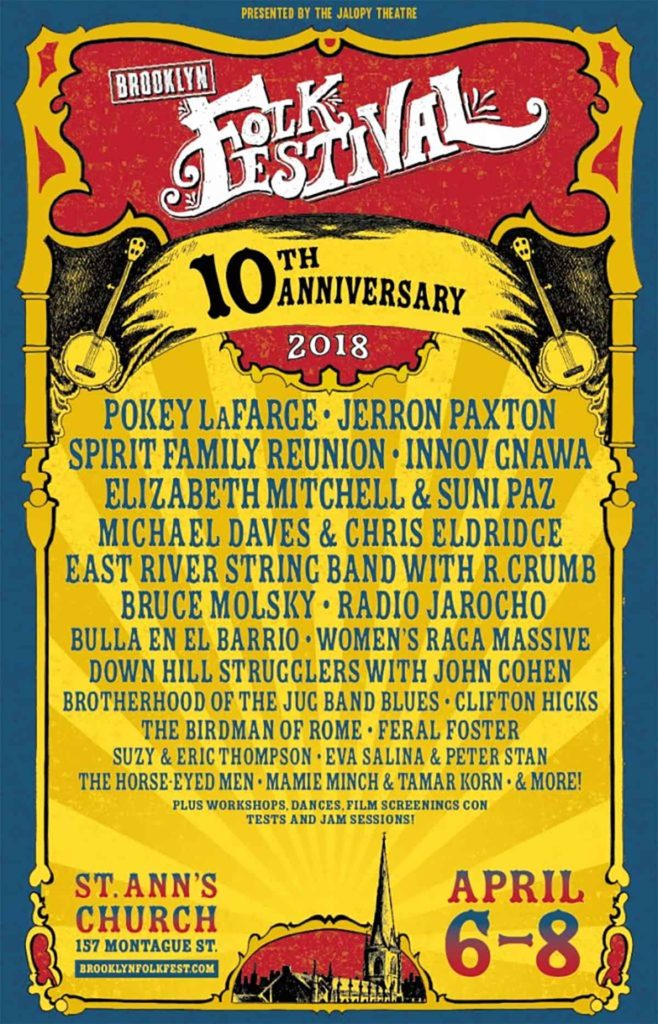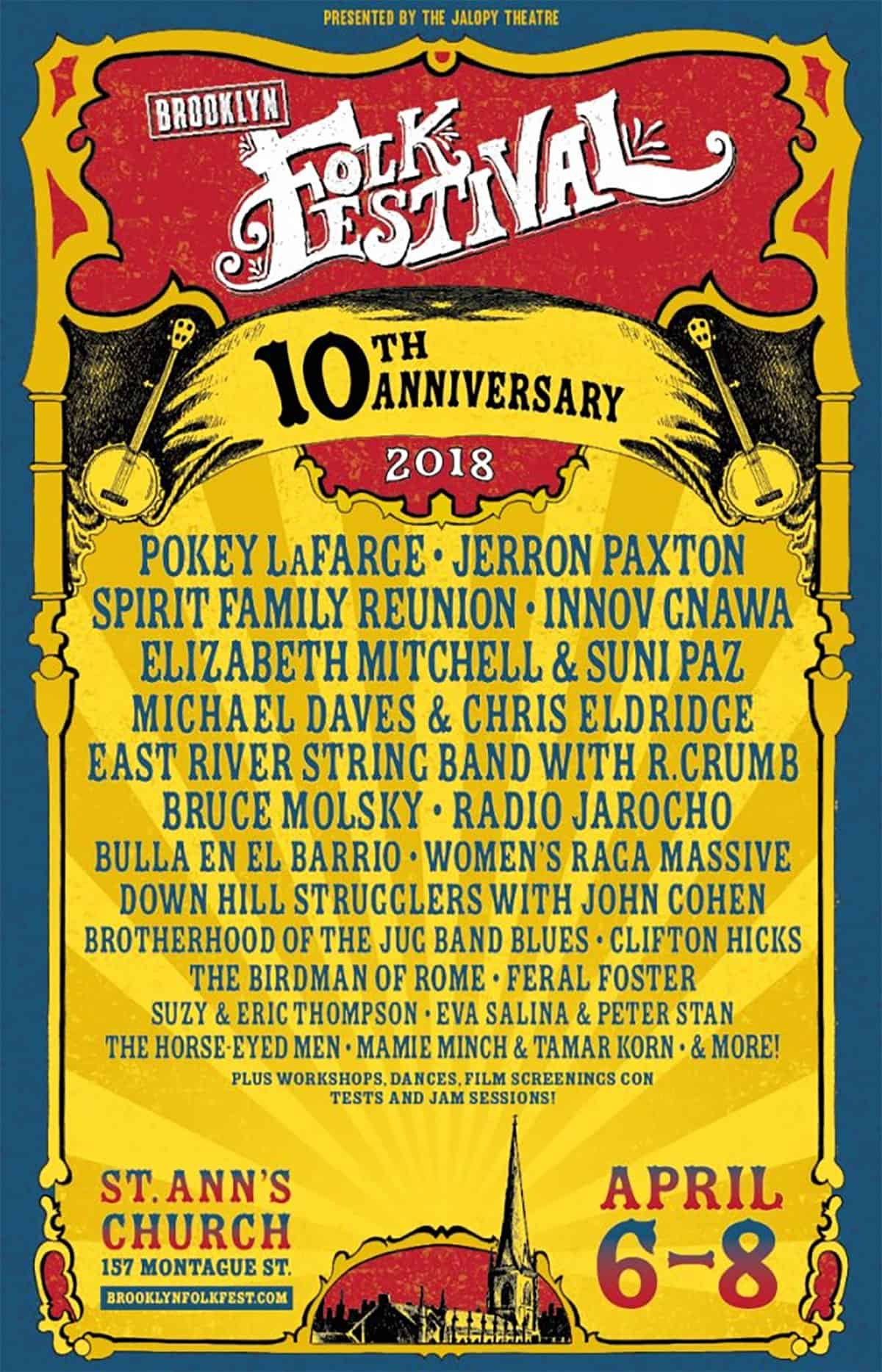 Only Red Hook could birth a banjo throwing competition. During the 2011 Brooklyn Folk Festival, then held at the Brooklyn Waterfront Artists Coalition (BWAC), the founders considered how to use the waterfront to draw greater crowds.
Only Red Hook could birth a banjo throwing competition. During the 2011 Brooklyn Folk Festival, then held at the Brooklyn Waterfront Artists Coalition (BWAC), the founders considered how to use the waterfront to draw greater crowds.
“At that point (the waterfront) was pretty decayed and terrible looking,” Lynette Wiley, a co-founder of the festival said. “Eli Smith and my husband Geoff, [the two other co-founders of the festival] came up with this idea of a banjo toss. So they took an old, broken down banjo, and they tied a string on it, and they put a knot at every foot, then we did a contest of who could throw the banjo the farthest into the water.”
Christened “The Banjo Toss,” the event attracted upwards of 500 people. The tradition continues even as the festival moved from BWAC to St. Ann’s Church in Brooklyn Heights. Now celebrating its 10th year, the Brooklyn Folk Festival will host a parade from the Smith Street station to the waterfront.
Beautiful venue
Wiley noted that St. Ann’s Church is also a perfect setting for music. “It’s a wonderful place to hold a festival. The sound is impeccable. The room is gorgeous. The church boasts the first figural stained glass that ever came to America—the windows are unbelievable.”
Along with joining renown acts from around the world with local talents, the festival curates new resources, workshops, and impromptu “jam sessions.” One Sunday evening highlight is The Association for Cultural Equity presentation of Global Jukebox, a collection of unpublished folk performances from around the world, and will be leading a workshop on the newly released archive.
“Folk music is music of the people from the people,” Wiley said. “That homemade quality is dear to our hearts. And because of that and the style of music, it really creates community. We’ve had people who started as students who become performers; there’s not much separation between the artist and the stage; it really becomes a large family.”
The Brooklyn Folk Festival is organized by Jalopy Theater and Music School in Red Hook. In fact, the first two years were performed at the relatively tiny theater. In 2006, shortly after opening the Jalopy theater, Eli Smith (also a banjo teacher) proposed doing it at the Jalopy. “It was great for when we were doing it for three nights, but we quickly reached our capacity, which is why we’ve been moving it to larger and large venues.”
Competitions
Along with jam sessions and workshops, the Brooklyn Music Festival will have plenty of contests. After two years of a harmonica playing contest, they are now switching to a fiddle playing contest. Along with fiddle students from Jalopy and the hundreds from New York, Wiley said “it’s going to be a heady thing.”
Highlights
April 6 – Friday
Bruce Molsky, who Wiley described as “probably the most important old-school fiddlers in the country” will be giving a two hour workshop at 2 pm before a 4:30 pm performance.
Danielle Brown reads from her ethnographic memoir, “East of Flatbush, North of Love.” Brown holds a PhD in music from NYU. She founded My People Tell Stories to forward opportunities from people of color to create and interpret their own stories. 1 pm.
“How They Got Over.” Director Robert Clem and co-producer/narrator Jerry Zolten will join the discussion for their documentary that looks at the “Golden age of gospel music” and how it influenced (if not determined) rock ‘n’ roll. 6 pm.
April 7 – Saturday
Craig Ventresco & Meredith Axelrod. Basically impossible not to smile for this honky-tonk duo. 2 pm.
Family Square Dancing with Louisville-natives Johanna Sims and Alex Udis. 4 pm.
An Introduction to the Global Jukebox by The Association for Cultural Equity. 6 pm
April 8 -Sunday
Vincent Cross leads a traditional songwriting workshop at 2 pm.
Michael Daves & Chris “Critter” Eldridge. 8:30 pm
Pokey Lafarge. 9:15 pm
Brooklyn Folk Festival Day passes range from $25-$40 with three day GA tickets at $85. Children under 5 enter for free, and it’s half priced for kiddos between 6 and 12.
St. Ann’s Church located at 157 Montague St. between Clinton and Henry in Brooklyn Heights.









